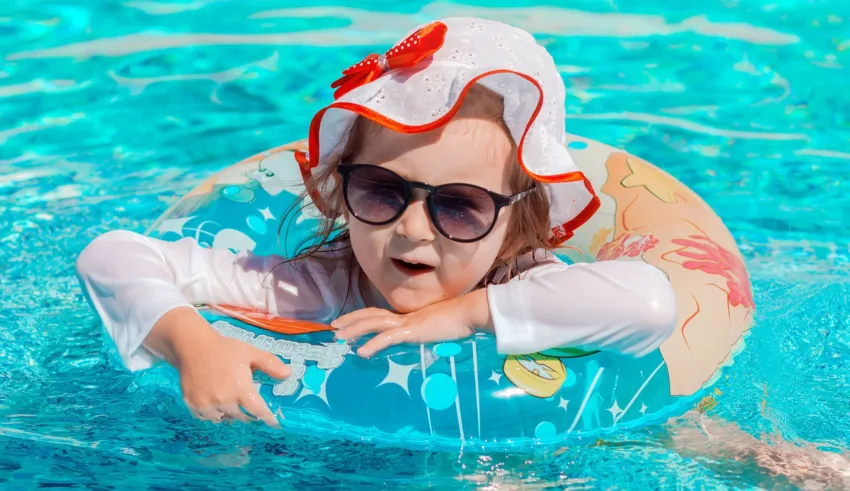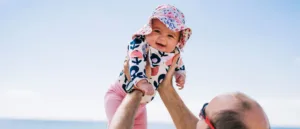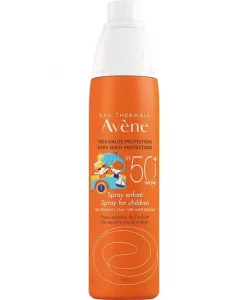
Parents’ instinct is to protect their infants and young children. Yet, too many babies are getting sunburned and tanned. Babies and young children have sensitive skin that can be easily damaged by the sun’s ultraviolet rays. In this article from The Dermo Lab and in collaboration with the dermatologist Dr. Rania Al Mahrous, we offer simple baby sun protection tips to prevent damage to your child’s skin that can lead to skin cancer.
Why children are at risk
- The sun’s extreme heat can be dangerous for all children, especially infants and young children.
- Babies are not born with a developed skin protection system, so their skin tends to burn more easily. Even children born to dark-skinned parents need full protection.
- Babies have more sensitive skin because the outer layer of their skin is thinner.
- A baby can’t tell you if he is too hot or if the sun is too strong. Your baby may start to cry and you won’t know if he is tired, hungry, or hot!
- Babies can’t physically move to escape the sunlight. A six-month-old baby lying on a blanket is less mobile than a one-year-old who can move into the shade.
- Babies rely totally on their caregivers to protect them from the sun and other related risks.
How to protect your baby’s skin
Because infants’ skin is so sensitive, it’s best to protect them from the sun for the first six months. Dr. Rania Al Mahrous stresses that it is best not to expose newborns to the sun for fear of burning.
It’s especially important to avoid direct sun exposure and seek shade during the hours when the sun is strongest, between 10 a.m. and 4 p.m. According to Dr. Rania Al Mahrous, your baby can be exposed to the sun’s rays early in the morning or an hour before sunset, when the sun’s rays are not strong.
Car rides can also lead to unintended exposure to the sun. While glass protects most UVB rays, UVA rays can pass through windows. Like UVB rays, UVA rays damage DNA and can lead to skin cancer. Consider buying a UV shield that can be hung over any window that allows the sun’s rays to reach the child’s seat. Otherwise, it’s best to have your baby wear sun-protective clothing in the car.
Start using sunscreen at 6 months
When your baby turns 6 months old, it’s time to introduce sunscreen.
Choose:
- A broad-spectrum, water-resistant sunscreen with a sun protection factor (SPF) of at least 15.
- A physical sunscreen containing zinc oxide and titanium dioxide. Dr. Rania Al Mahrous states that the best sun protection for babies is a physical sunscreen that fully reflects the sun’s rays instead of chemical sunscreen that absorbs them.
You can test the sunscreen on the inside of your baby’s wrist. If the child has a little irritation, try a different sunscreen. You should cover your baby with a hat and protective clothing. Use sunscreen on all exposed areas, such as the back of hands, face, ears, and neck.
Apply sunscreen 30 minutes before going outside and reapply every two hours or more frequently if you’re taking your baby to the pool or if he or she is sweating.
What about toddlers? Toddlers are hard to catch and hold. So, you’ll need to get creative with your sunscreen application. Sunscreen in a stick form works well on the face and hands, as toddlers are less likely to rub the product into their eyes. Spray sunscreens are popular, but make sure to apply sunscreen evenly and liberally to all exposed skin.
Also continue to seek shade, schedule outdoor play before 10 a.m. or after 4 p.m., and cover young children with hats, sunglasses, and light clothing that covers as much skin as possible. For added protection, look for special clothing with an ultraviolet protection factor (UPF) of 30 or higher.
Now that you know what to look for, check out one of the best sunscreens for kids aged 3 and up below. This is the safest sunscreen to protect your child from the sun’s harmful UV rays. This children’s spray is perfectly suited for children’s sensitive skin.
Eau Thermale Avène Sunscreen Spray for Children SPF 50+
What are some baby sun protection tips?
Try these tips to keep your child happy and healthy in hot weather.
- Avoid dehydration. Like adults, babies and young children need to drink plenty of fluids to avoid dehydration.
- Reapply sunscreen often! At least every two hours, and more often if your child is swimming or sweating.
- Set a good example. Protect yourself and teach everyone in your family to protect themselves from the sun’s rays.
- Never use baby oil to protect children from the sun. It won’t protect them and will hurt them more.
Don’t forget!
Protect yourself from the sun all year round. Children learn best from your example.
Babies and children of all skin colors need sun protection. Although darker-skinned people develop far fewer skin cancers than lighter-skinned people, when they do develop one, it is more likely to be diagnosed at a later stage and have a poorer outcome.
By following the tips above, you can ensure that your baby is better protected from painful sunburns today – and skin cancer in the future.










